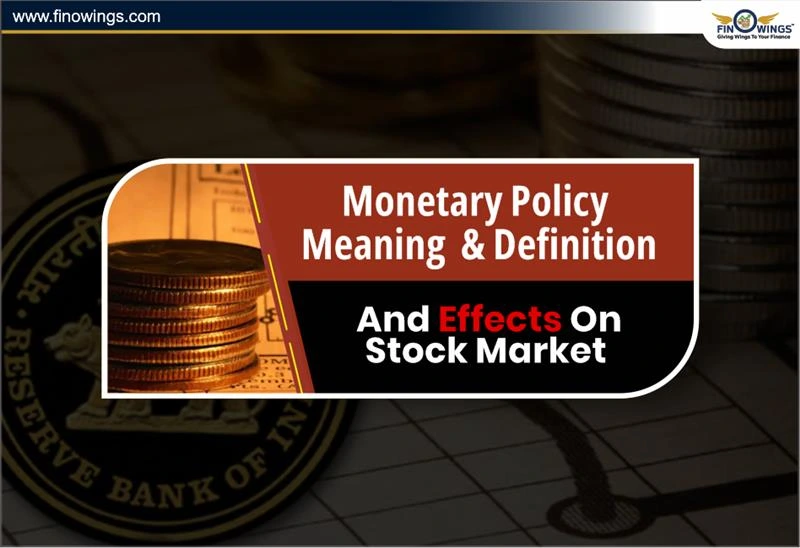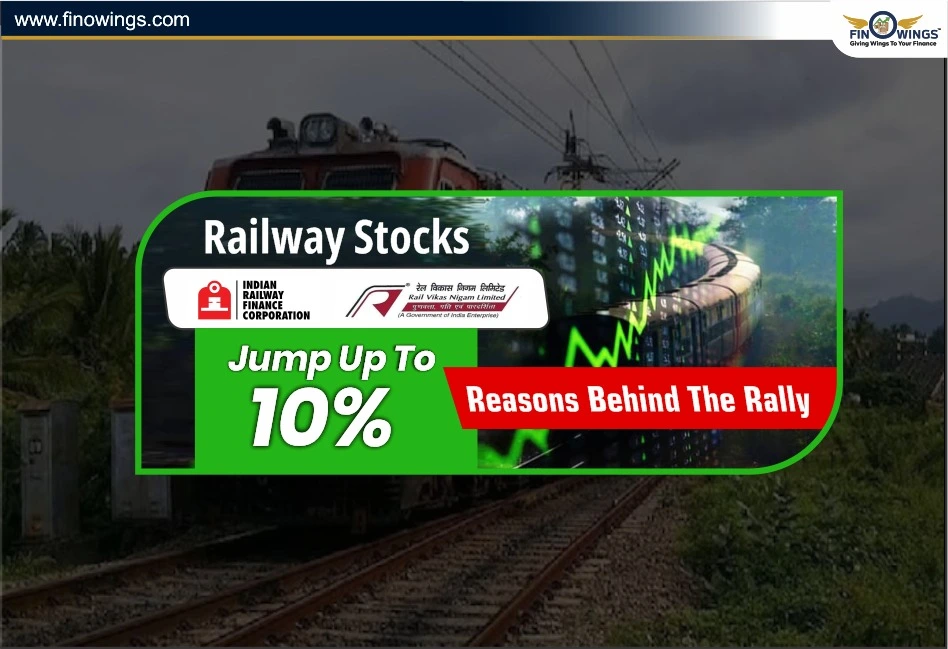Home >> Blog >> Monetary Policy Meaning and It's Effects on Stock Market
Monetary Policy Meaning and It's Effects on Stock Market

Table of Contents
Monetary Policy Meaning
It forms part of the Central Bank's macro policy strategies designed to guide the growth of the money supply in the economy towards particular aims. It is the application of monetary policy tools by the central bank to control the supply of credit in the market within the context of an economic policy objective.
This blog will cover the technical analysis of monetary policy and how it affects the financial markets.
To learn the 'Basics to Advance Analysis in the Stock Market', buy our important and worth Technical Analysis course.
Types
1. Expansionary: Decrease in interest rates and increase in money supply.
2. Contractionary: Increase in interest rates and decreased money supply.
Definition And Objective
|
Definition |
Objective |
|
The process by which a central bank uses interest rates to regulate the amount of money in an economy in order to accomplish macroeconomic goals such as growth, consumption, liquidity, or inflation control is known as monetary policy. |
|
Difference Between Monetary and Fiscal Policy
|
Features |
Fiscal |
Monetary |
|
Executed by |
Government (Ministry of Finance) |
Central Bank (RBI) |
|
Focus |
Government spending and taxation |
Supply of money and interest rates |
|
Objective |
Economic growth, development, and welfare |
Inflation control, stability of prices, liquidity |
|
Tools Used |
Taxation, government expenditure, subsidies |
The repo rate, CRR, SLR, OMO, interest rates |
|
Time Taken for Effects to Emerg |
Medium to long-term |
Short to medium-term |
Tools
1. Repo Rate: The rate at which the central bank loans money to commercial banks is known as the repo rate.
2. Reverse Repo Rate: The rate at which the central bank borrows funds from commercial banks is known as the reverse repo rate.
3. Cash Reserve Ratio (CRR): It is a specific proportion of a bank's total deposits that have to be kept in the central bank's accounts.
4. Statutory Liquidity Ratio (SLR): This is the bare minimum of deposits that the bank is required to hold in securities that have been approved by the government.
5. Open Market Operations (OMO): Purchasing or disposing of government securities is known as open market operations, or OMO.
6. Bank Rate: The bank rate is the interest rate that a central bank levies on loans to commercial banks.
RBI Monetary Policy Repo Rate
RBI Monetary Policy current repo rate is 6.25% as of 7 Feb 2025 after a reduction of 25 basis point.
How Monetary Policy Affects Markets
Interest Rates and Stocks Market:
- Besides, bear with the fact that low interest rates, more or less, lead the way to bullish trends in the equity markets.
- A higher key rate can incur capital flight out of the country and then a correction in the market.
- Past trends have shown the same pattern in advantages as indices like Nifty 50: postrate cuts, Sensex shows positive ticks in their movement.
Bond Market Dynamics
- According to studies, Bond yields are inversely proportional to bond prices.
- An increase in rates causes a rise in bond yields and a fall in the bonds' prices.
- Technical indicators like MACD and RSI are used by traders to watch the trends of bonds being yielded after the policy announcement.
Currency Performance
- Higher rates bring about the strengthening of the domestic currency.
- Forex traders use moving averages and Fibonacci retracements to analyze trends in currency after policy changes.
Inflation
- The driver of policy is inflation.
- The different technical indicators like trend lines, Bollinger Bands, and stochastic oscillators aid in predicting an inflationary movement and market reaction.
Sectoral Impact
- Rate cuts e.g., benefit the real sector, the auto sector, and banking.
- Contractionary policies are preferred by defensive sectors of FMCG and Pharma.
- Besides, traders are willing to perform relative strength analysis between sectors to drive their investments.
How an Investor can Position Themself
Before Policy Announcements:
- Study how the market moves in the past before announcing policy changes.
- Use chart patterns such as flags, pennants, and head and shoulders in predicting breakouts.
After Policy Announcements:
- Monitor market sentiment with the help of candlestick patterns.
- Use support and resistance analysis to find new entry and exit points.
Conclusion
It's clear how monetary policy makes a significant impact on the changes in the market, inflation, and investment decisions. The central banks changing the rates always affects the stock flow, bond yields, and international relations currency.
Investors and traders have to remain careful and ensure that the policy outcomes are being managed with proper technical analysis. Grasping these concepts helps in ensuring that the portfolios are well-placed for short-term gains and long-term growth.
Other Related Blogs
Explore debt to equity ratio analysis blog.
Explore the put/call ratio to understand when to sell or buy in the stock market.

DISCLAIMER: This blog is NOT any buy or sell recommendation. The content is purely for educational and information purposes only. Always consult your eligible financial advisor for investment-related decisions. The author does NOT through this blog intend to involve readers in any investment or trading activities.
Frequently Asked Questions
It is one of the most important tools available to central banks for managing the money supply, maintaining price stability, and promoting broad economic stability.
The six tools are Repo Rate, Reverse Repo Rate, Cash Reserve Ratio (CRR), Statutory Liquidity Ratio (SLR), Open Market Operations (OMO), and Bank Rate.
Fiscal policy is regulated by Government whereas Monetary policy is regulated by RBI.
RBI controls this policy in India.
The main objectives are-
1. Price stability and inflation control
2. Economic growth and employment generation
3. Exchange rate stability
4. Promotion of savings and investments



















